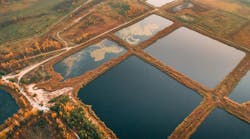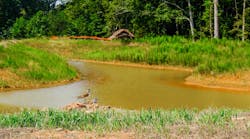The city of Greeley is located in northern Colorado, about 60 miles northeast of Denver. Greeley’s municipal water utility is focused on ensuring that the community has a healthy and secure water future. One major effort in accomplishing that goal has been strengthening the city’s water and sewer infrastructure. Greeley stays ahead of problems by properly funding projects to maintain and rehabilitate existing systems and by building additional system capacity to keep up with population growth.
| The city has used CIPP annually for 20-plus years. |
One of Greeley’s most successful wastewater projects is the cured-in-place pipe (CIPP) program that rehabilitates city sewer pipelines. CIPP is, in simplest terms, a process of creating a new pipe within an existing pipe in the ground. A CIPP project reduces costs and community disruption when compared to a project that includes complete pipe replacement.
Once a section of pipe is selected for rehabilitation, wastes are diverted to an alternative pipe, the line is cleaned and excess debris is removed. A felt tube is saturated with resin and placed into the pipe. Hot water or steam then is used to cure the resin to form a tight-fitting liner. A robotically controlled cutting device is placed into the pipe to assure a perfect fit. Finally, the rehabilitated pipe is inspected by a closed-circuit television system to confirm that the installation was successful and that the pipe is ready to be put back into service. The newly lined pipe is corrosion resistant and will be able to serve the community for many decades.
Growing Pains
Greeley works with outside contractors that specialize in CIPP installation. The city has used CIPP annually since 1987 with much success. This program has been critical in the past 10 years considering the city’s rapidly growing population. In 2000, Greeley’s population was 76,930; its 2010 estimated population was 94,358.
An expanding population increases flows in the sewer line and expedites corrosion of concrete pipes from higher levels of hydrogen sulfide. Growth has lengthened the size of Greeley’s wastewater collection system from 298 miles of pipe in 2000 to 348 miles of pipe in 2010. With a growing system that dates back to 1890, reducing the amount of maintenance on old lines is helpful.
The most recent project, conducted in 2010, showcased an effort to rehabilitate a section of sewer trunk line, a major carrier of sewage for the city. It was critical to rehab this section due to concerns of its existing bituminous lining falling from the pipe walls and the potential impacts t the wastewater plant and for groundwater infiltration.
This particular 9,000-ln-ft section of pipe travels under five Union Pacific Railroad lines, so use of a dig-and-replace method would have caused significant disruption. In addition, a major construction project would cause traffic disruptions and affect visitors attending Greeley’s largest draw—the Greeley Stampede, which includes events, concerts and rodeos in late June and early July.
A Secure Choice
There are many advantages to CIPP. The pipe is repaired with limited street closures and weather delays. This is due to the rapid speed of installation: A section of line is completed in less than 24 hours. The method also minimizes disruptions to residences, businesses and roads. Lack of disruption, lower cost of materials and less man-hours make CIPP affordable. In 2008, the cost of lining 8-in. pipe was about 10% of what it cost to dig and replace an 8-in. pipe.
| In 2010, Greeley rehabilitated 9,000 ln ft of sewer trunk line. |
CIPP has reduced the amount of pipeline repair and cleaning the city of Greeley needs to conduct. It eliminates roots intrusion, a problem in Greeley’s dry climate. Infiltration is reduced, as CIPP seals out water that can enter through cracks or joints during wet weather. (Major leaks can overload the wastewater treatment plant during large rain events.) Another advantage is improved structural integrity: The method adds at least 50 years to the design life of pipelines and lessens the possibility of mainline collapse. The smoother surface of CIPP also decreases debris buildup and increases flow capacity.
“Several of the lines that now have a liner had a history of blockages, but since installation of CIPP [they] haven’t caused us any problems,” said Tony Braun, the GIS technician for Greeley’s Wastewater Collection Div. There is not a solid correlation between miles of CIPP and the number of mainline blockages, but Greeley has seen a decrease in problems over the years. The CIPP project is just one way that the city keeps its wastewater collection system well maintained. The other tactics include closed-circuit television inspection and routine cleaning programs. In 2010, Greeley checked 29 miles of its system through the television system and cleaned 389 miles of pipe. All of this proactive maintenance contributed to limiting system blockages to just one incidence in 2010.
Download: Here






